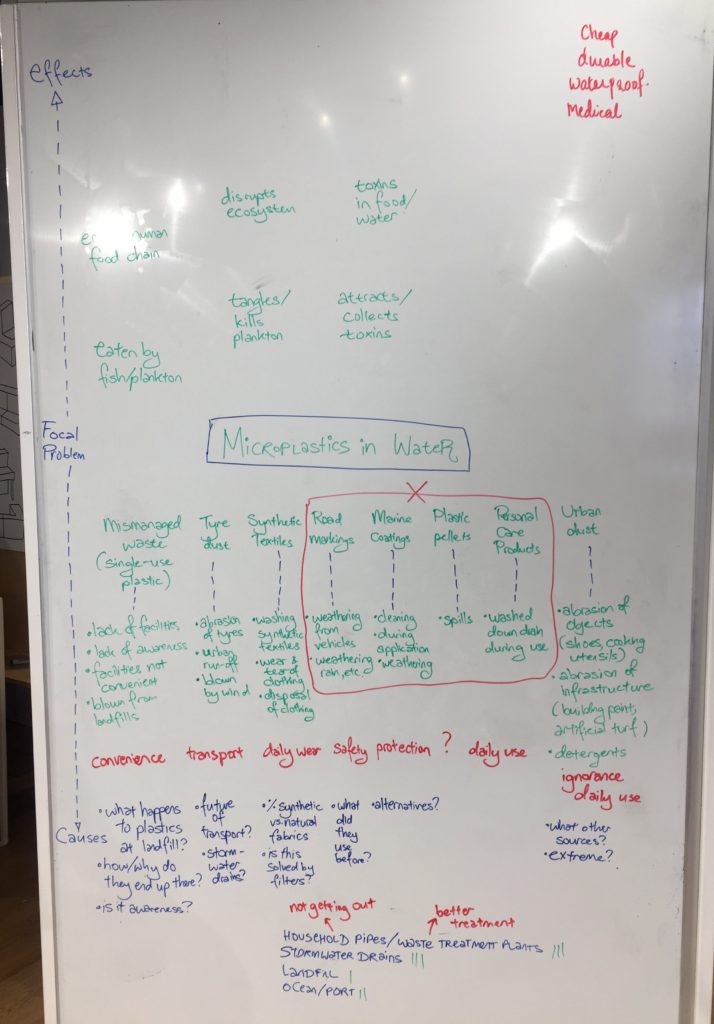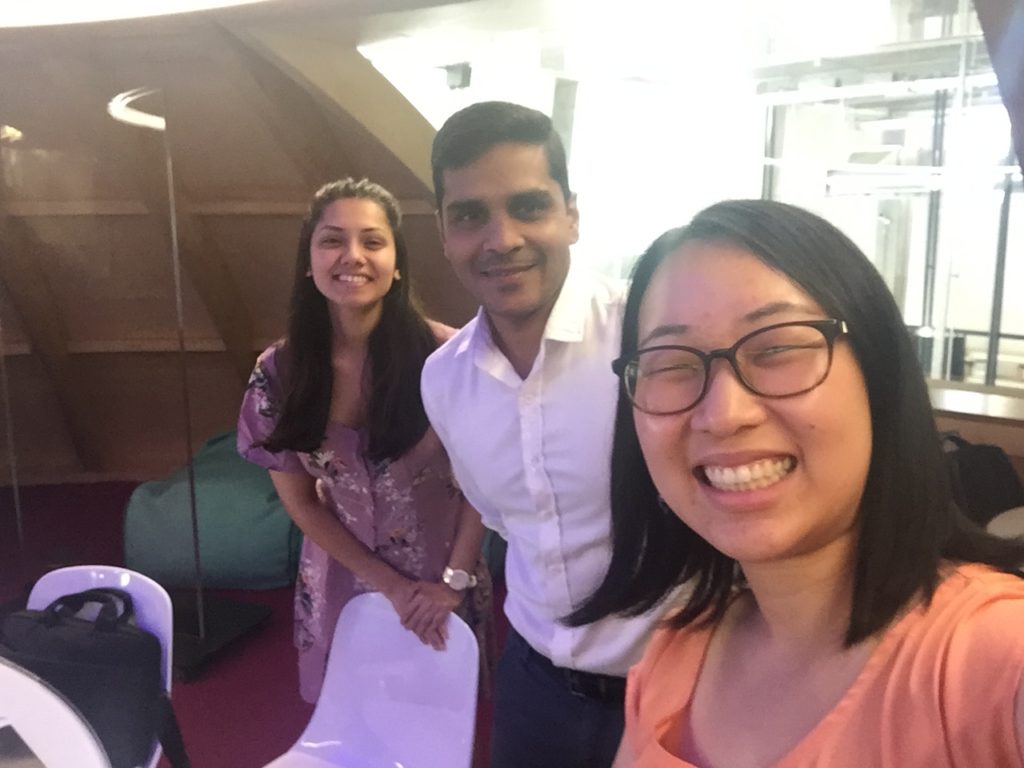This week we looked at microplastics and tried to focus in on the root of the problem by using a tool called a Problem Tree. We focused more on the causes since we are quite familiar with the effects of plastic pollution. This helped us narrow down the area we want to look at, in particular, namely microplastics from synthetic tyres, synthetic textiles, and mismanaged waste.

We spoke to a Swinburne-based polymer scientist, Dr. Nishar Hameed, who is a chemist by training and whose previous work includes creating biorenewable plastics (different from fossil-based plastics). We learned a lot about the properties of plastic, building on information that we had gathered from the (super helpful) slides that teaching team Christine had shared with us earlier.

It’s also been a lot about knowledge-seeking and making contacts for finding out more knowledge! We have been hearing somewhat positive news coming out of DAVOS where big companies are being called out on their role in pollution, leading to pledges to increase their share of responsibility. Initiatives like Loop show that there is big interest in closing the loop and maybe making zero waste a commercial reality.
If you haven’t seen it yet, HRH Duke of Cambridge speaks to Sir David Attenborough at the Davos Summit about the state of the natural world. His description of ecosystems links directly to our class on systems thinking.
Source: The Guardian
We had a class on systems thinking where we looked holistically and thought about other underlying causes. In particular, the Iceberg model seems useful for us to question the underlying mental models that have gotten us to this stage in the Anthropocene (Google definition: the current geological age, viewed as the period during which human activity has been the dominant influence on climate and the environment).

Team Spring is currently spread across three countries (and time zones) this week so we’ve had to juggle a bit to collaborate on filling in our Iceberg model. Thanks to technology helping us to work online!
Insights
- There are SO many solutions already existing and so much work being done on plastics and polymers. Something crucial is missing in addressing this problem!
- While there are ways to process microplastic for reuse, the issue is how to collect them from the ocean and sort them for this purpose
- Biorenewable plastics sometimes are not that environmentally friendly because of the solvents they contain. For those that are genuinely eco-friendly, the constraint factors are usually cost and whether they have the same properties as plastic
- Different types of plastics can be separated from each other through heating (because of their different melting points) or through dissolving in solvents (because of solubility in different solvents)
- Synthetic tyres seem to be a particular problem as natural rubber is cross-linked with different materials (such as sulphur) and metal fibers and fabrics, which is an irreversible process
Sir David Attenborough, speaking at the Davos Summit 2019
“Care for the natural world. Not only care for the natural world but treat it with great respect and reverence. The natural world is, as I’ve said, the source of all wonder and our future. We’re bound up together. The future of the natural world is in our hands. We have never been more powerful. We can wreck it with ease. We can wreck it without even noticing that we’re doing it. And if we wreck the natural world, in the end we wreck ourselves.”
Next Steps
- Focus into synthetic tyres and fabrics
- Critically review our initial concepts, ReNewPod and Filture, using a SWOT assessment
- Finding ideas/concepts to prototype and zooming in on our user(s)
- Interview with Plastic Ocean Executive Director
- Take part in 2019 Port Philip Bay Nurdle Hunt – hopefully network with the right stakeholders!
- Add on to our future context, using the Three Horizons framework and looking into industry forecasts
References
https://www.reuters.com/article/us-davos-meeting-plastic-idUSKCN1PJ1WZ


Really like the way you are all continuing to expand on your knowledge in microplastics and are speaking to some great individuals in the industry! For next steps also, remember to try to be concise and structured about your approach to ideas and problem areas, using time-blocking tools etc.